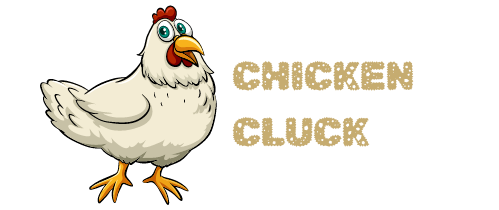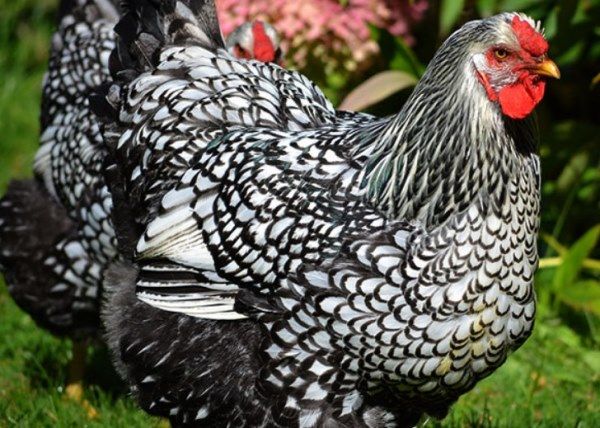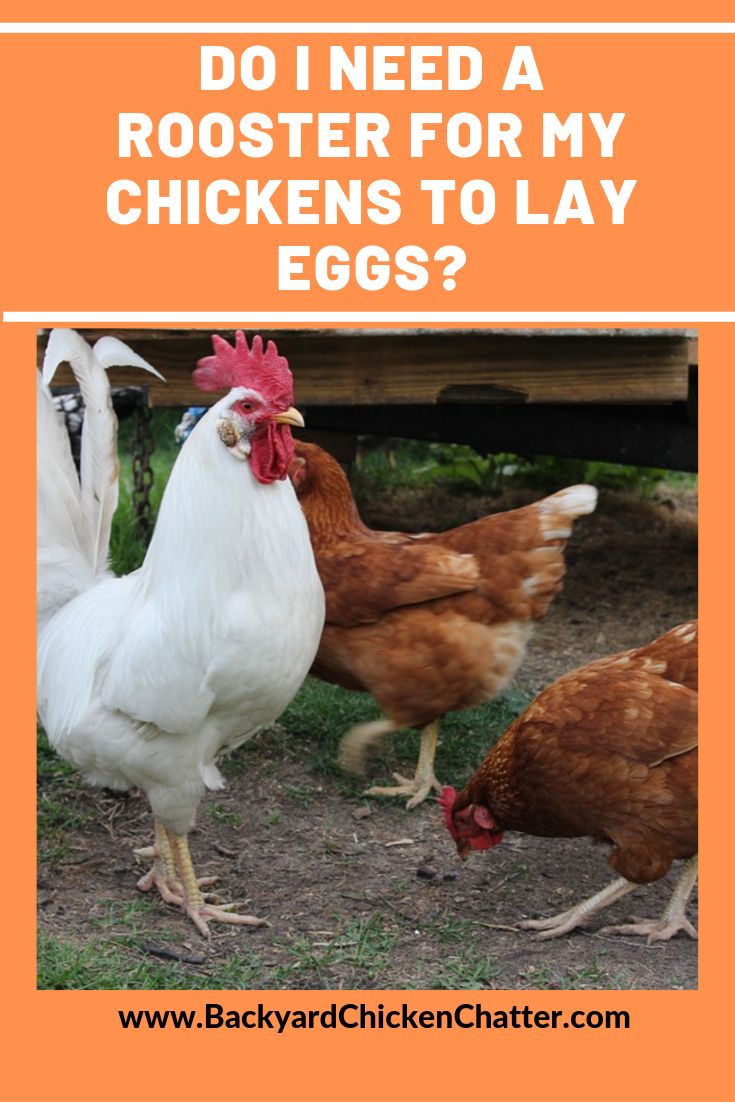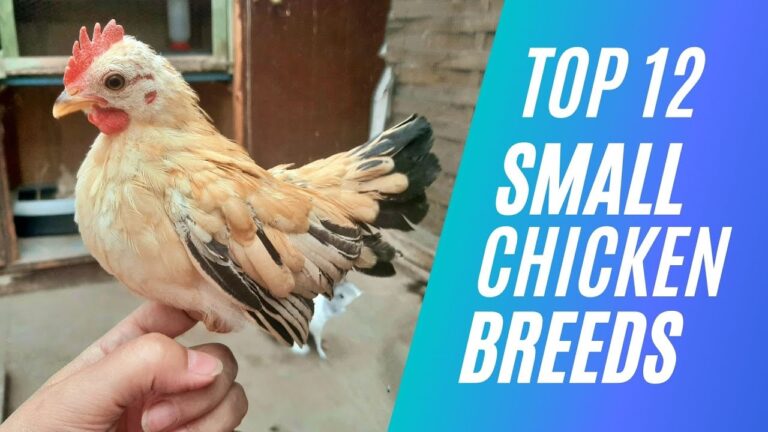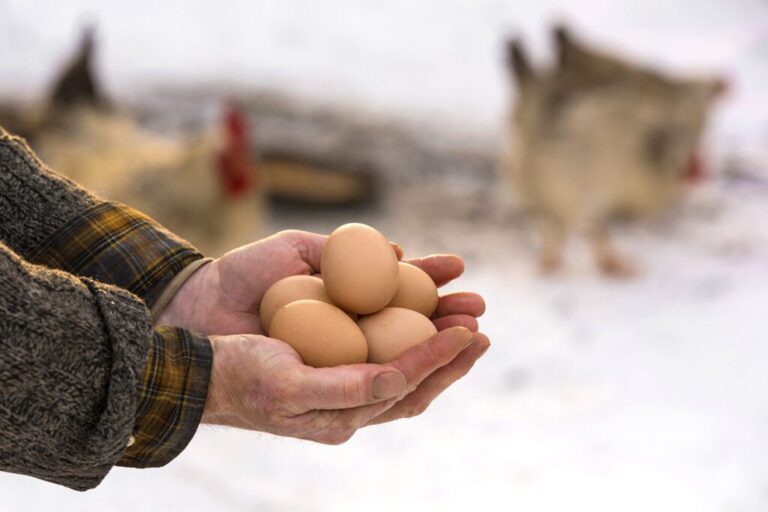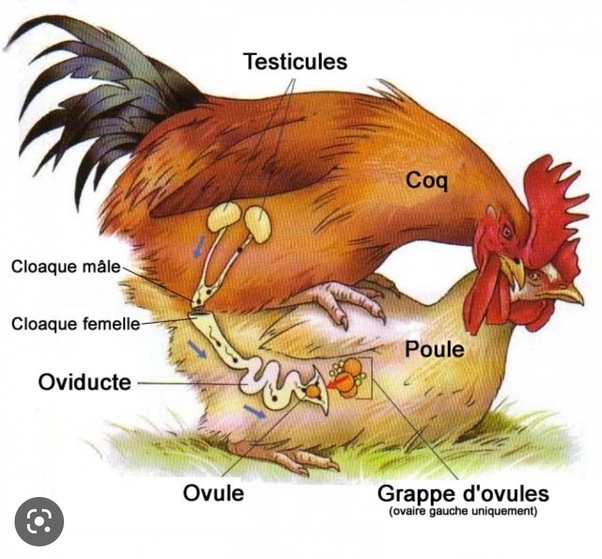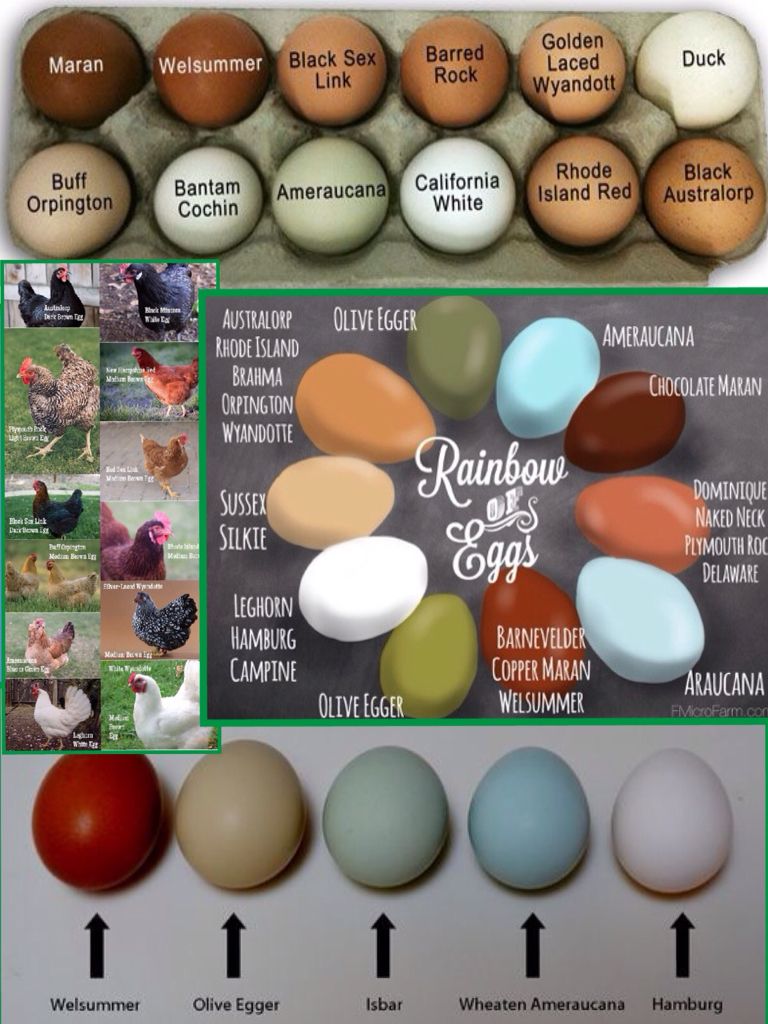A Chicken Breed Egg Size Chart categorizes breeds by the average size of eggs they produce, typically ranging from small to jumbo. This chart serves as a crucial guide for poultry enthusiasts and farmers.
Understanding the egg-laying capacities of various chicken breeds is essential for anyone interested in poultry farming or backyard chicken keeping. Selecting the right breed is key to meeting your egg production goals, whether they involve large quantities for selling or specific egg sizes for culinary purposes.
A comprehensive chicken breed egg size chart permits informed decisions on which breeds align best with your needs. By choosing the appropriate breed, you maximize egg production efficiency and ensure your flock’s compatibility with your lifestyle and space constraints. This guide will keep you well-equipped to nurture a flock that’s tailored perfectly to your egg-related ambitions.
The Role Of Breed In Egg Size
The importance of chicken breed cannot be overstated when it comes to egg size. Egg size can greatly vary. Each breed brings its unique genetic makeup to the table, influencing the size of eggs laid. Want to learn more? Let’s crack into the details.
Genetic Factors Influencing Egg Dimensions
Chickens are born with specific genetic codes. These codes are like recipes. They tell a chicken how to grow and what size eggs to lay.
- Egg gene: Some chickens have genes that make big eggs.
- Heritage impact: Old breeds often lay smaller, but tastier eggs.
- Health and diet: Chickens with better care often lay larger eggs.
Comparing Egg Sizes Across Different Breeds
A table lets us see different chickens and their egg sizes side by side. Check it out:
| Breed | Egg Size |
|---|---|
| Leghorn | Large |
| Rhode Island Red | Medium to Large |
| Silkie | Small |
| Orpington | Large to Very Large |
Notice how Orpingtons tend to lay the biggest eggs? Meanwhile, Silkies sit at the smaller end of the scale. Isn’t nature fascinating?

Credit: www.pinterest.co.uk
Popular Chicken Breeds And Their Egg Sizes
Backyard chicken farming brings endless joys, one of which is collecting fresh eggs. But not all chickens are the same. In this guide, we’ll explore different chicken breeds and the egg sizes they produce. From petite bantams to the robust Leghorns, find out which hens lay the perfect eggs for your needs.
Small Egg Producers: Bantam And Similar Breeds
Charming and compact, Bantams are loved by many. Despite their size, they pack a punch in personality. These birds lay small eggs but are perfect for smaller spaces.
- Sebright Bantam: Tiny eggs, great for decoration.
- Serama Bantam: Known as the smallest chicken breed.
- Pekin Bantam: Fluffy and cute with equally fluffy eggs.
Medium Egg Layers: Plymouth Rock, Sussex, And More
If you’re looking for something in between, medium egg layers do the trick. Breeds like Plymouth Rock and Sussex give you a good balance of egg size and hen personality.
| Breed | Egg Size |
|---|---|
| Plymouth Rock | Medium |
| Sussex | Medium |
| Wyandotte | Medium-sturdy eggs. |
Large Egg Favorites: Rhode Island Red, Leghorn, And Others
Rhode Island Reds and Leghorns are superstars in the egg-laying world. They consistently lay large eggs that are perfect for your breakfast needs. Expect full egg cartons and happy family breakfasts with these breeds.
- Rhode Island Red: A favorite for its large, brown eggs.
- Leghorn: Prolific layers with large, white eggs.
- Orpington: Gentle giants with large, tasty eggs.
Understanding Egg Size Terminology
When exploring the world of chicken breeds and their eggs, sizes vary widely. Knowing egg size terminology helps you predict the yield from your flock. Let’s crack into the terms often used to describe egg sizes from chickens, ranging from the smallest peewee to the largest jumbo.
Decoding Terms: Peewee To Jumbo
Gathering eggs from your coop is always exciting, but what size eggs are you getting? Understanding these terms can enhance your chicken-keeping experience:
- Peewee: The tiniest of eggs, typically weighing in at 35 grams or less.
- Small: Small, but perfectly formed, these eggs weigh between 43 to 49 grams.
- Medium: The middle ground for eggs, with a weight of 50 to 55 grams.
- Large: What many recipes call for, large eggs weigh between 56 to 63 grams.
- Extra-Large: Bigger than large, these weigh 64 to 70 grams.
- Jumbo: The largest size, with each egg weighing over 71 grams.
Industry Standards For Egg Sizing
Egg sizes are not random. They follow industry standards, ensuring consistency. Here’s a quick look at these standards:
| Size | Weight Per Dozen |
|---|---|
| Peewee | 15 ounces (425 grams) or less |
| Small | 18 ounces (510 grams) |
| Medium | 21 ounces (595 grams) |
| Large | 24 ounces (680 grams) |
| Extra-Large | 27 ounces (765 grams) |
| Jumbo | 30 ounces (850 grams) or more |

Credit: tbnranch.com
Egg Size And Nutrition Content
Egg size and nutrition content are key when picking poultry eggs. Many assume that the size of an egg reflects its nutritional value. Is this truly the case? A chicken breed egg size chart is a tool for understanding egg dimensions. Yet, it doesn’t tell the whole story about the nutrients inside. Let’s crack open the facts about egg sizes and their nutritional content.
Does Bigger Mean Better?
Egg size ranges from peewee to jumbo. Large eggs are common in stores, but big doesn’t always mean more nutrition. The eggshell-to-content ratio plays a role. Smaller eggs often have a thicker shell, so you get less liquid egg. It’s about what’s inside that counts.
Nutritional Differences In Various Egg Sizes
Eggs boast proteins, vitamins, and minerals. But do larger eggs contain more nutrients? Not necessarily. All eggs share a common nutritional profile, although slight variations exist. Here’s a quick look at what a typical egg might hold:
| Egg Size | Protein | Vitamin D | Iron |
|---|---|---|---|
| Small | 4.9g | 0.7µg | 0.6mg |
| Medium | 5.3g | 0.9µg | 0.9mg |
| Large | 6.5g | 1.1µg | 1.2mg |
| Extra-Large | 7.0g | 1.2µg | 1.5mg |
The table shows that while jumbo eggs offer more protein, the increase is proportional to egg size. It’s essential to note that egg size might influence portion control and total calorie intake. The choice ultimately comes down to preference and specific dietary needs.
Factors That Affect Egg Size In Chickens
When raising chickens, egg size matters for many reasons. It can affect both the value of the eggs and breeder preferences. The egg size of a chicken depends on various factors. Understanding these can help you manage your flock for the best results.
Age And Egg Size Correlation
Younger chickens, known as pullets, usually start laying smaller eggs. As they grow older, their eggs gradually increase in size. Generally, peak egg size occurs when hens are 2-3 years old. After this age, egg size may stabilize or slightly decline.
The Impact Of Diet And Health On Egg Production
A balanced diet is crucial for optimal egg production. Hens need a mixture of protein, calcium, and other nutrients to lay well-sized eggs. Any deficiencies can lead to smaller eggs or even health issues.
- Protein-rich feeds encourage larger eggs.
- Calcium strengthens eggshells and impacts size.
- Vitamins and minerals support overall hen health.
Good health and wellbeing also play a vital role. Chickens fighting off illness or infested with parasites may produce smaller eggs. Regular health checks and a clean coop can boost egg size.

Credit: www.pinterest.com
Seasonal Variations In Egg Size
Ever noticed that the eggs your chickens lay seem different over the year? Let’s dive into why and how the seasons play a significant role in the size of the eggs. Understanding these natural changes can help keep your flock happy and healthy, ensuring a steady supply of eggs suited to your expectations and needs.
How Seasons Influence Egg Production
Daylight and temperature greatly affect how many eggs a chicken lays. The length of the day triggers the hormones that control egg production. Here’s what happens:
- Long days in spring and summer mean more eggs.
- In winter, shorter days often cause a drop in laying.
- Egg size can also increase as hens receive more sunlight.
Temperature swings can stress chickens, leading to smaller eggs or a pause in laying. Consistent care through these shifts is key to maintaining egg size.
Adapting Chicken Care With Seasonal Changes
Changing your care routine with the seasons ensures your hens lay quality eggs all year. Follow these tips:
| Season | Care Tips |
|---|---|
| Spring |
|
| Summer |
|
| Fall |
|
| Winter |
|
Follow this guide to keep your chickens content through rain or shine. Contented chickens mean better eggs for your breakfast table!
Breeding For Egg Size: Techniques And Challenges
Welcome to the intriguing world of poultry breeding, where egg size becomes a pivotal factor for breeders and farmers alike. Breeding chickens for egg production is not just about quantity but also quality, or in this case, size. Sculpting the perfect egg-laying hen involves an array of techniques and challenges.
Selective Breeding Practices
Selective breeding stands as a cornerstone technique in the quest for larger eggs. Through careful pairing of chickens, breeders aim to enhance desired traits within future generations. The practice showcases:
- Pairing of larger hens with roosters known for offspring with sizeable eggs
- Monitoring offspring egg size for consistency
- Genetic line tracking to avoid inbreeding and maintain diversity
Despite its effectiveness, selective breeding is intricate, demanding precision and patience.
Ethical Considerations In Poultry Breeding
Ethics play a significant role in breeding as well. Focusing solely on egg size can come with consequences:
- Animal welfare concerns: Overemphasis on production traits can impact hen health
- Economic pressures may lead to compromised ethical standards
- Ensuring sustainable practices remains essential in breeding
As such, responsible breeding requires a balance between ambition and the wellbeing of the chickens.
The journey to larger eggs merges science, ethics, and a touch of artistry. It represents a continuous commitment to excellence in poultry husbandry.
Practical Guide To Chicken Egg Size Chart
Welcome to the Practical Guide to Chicken Egg Size Chart. This guide offers vital insights to backyard farmers and poultry enthusiasts. Knowing about different egg sizes helps in managing expectations and sales. Let’s dive into understanding how egg sizing works for various chicken breeds.
How To Use An Egg Size Chart
An egg size chart is a tool. It helps you identify the average egg sizes your chickens can produce. Here’s a simple way to use it:
- Find the breed of your chicken on the chart.
- Look across to see the typical egg size for that breed.
- Compare these sizes with the eggs you collect.
| Breed | Egg Size (oz) |
|---|---|
| Bantam | 1.0 – 1.5 |
| Leghorn | 2.0 – 2.5 |
| Rhode Island Red | 2.5 – 3.0 |
| Orpington | 3.0 – 3.5 |
Customizing Egg Size Charts For Small Scale Poultry Farms
Small farm owners can benefit from a customized egg size chart. Here’s how you can tailor one:
- Track egg sizes from your chicken over a period.
- Create a chart with this data, noting any trends.
- Factor in the age of the chickens as they can affect egg size.
Creating your chart ensures more accurate information for your specific situation.
Understanding egg sizes can optimize your farm’s output and profits. Use our tips above to ensure your chart serves your farm’s unique needs.
Conclusion
Embarking on the journey of backyard poultry begins with knowledge. Our chart simplifies choosing the right chicken breed for your egg needs. Share this guide, and help others in their quest for perfect eggs. Happy farming and here’s to fresh, home-grown breakfasts ahead!
